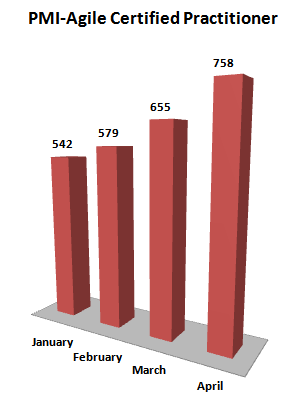This morning I read a tweet offering a 100% guarantee to pass the corresponding Agile exam. Offering such a guarantee is such BS and insulting to our craft. Reading the tweet sounded something right out of a Dr. Seuss book.I’ve come here to help you.I have what you need.And my prices are low. And I work with great speed.And my work is one hundred per cent guaranteed!
That is a quote from The Sneetches. The two main characters of the original Dr. Seuss story are the Sneetches and Sylvester McMonkey-McBean. If you don't know the story, I have it below. The original text is listed in blue. My commentary is in black.
I understand there are those who are eager to get a new Agile certification to add to their email signature or resume (Sneetches) and those willing to provide training and help them part with the money in their pockets (Sylvester McMonkey-McBeans). But when I offer an Agile Certified Practitioner workshop, the primary goal is not to teach attendees to pass an exam (though they will as a by-product). Rather, my primary goal is to introduce learners to multiple concepts and practices that can be leveraged later.
Are trainers primarily trying to help people be better at their craft or are they just trying to make fast money? I'm quite certain people will get value from attending an Agile training class. As someone who may be interested in getting a certification, what does a trainer have to do to pass your Sylvester McMonkey-McBean sniff test?
Image Source: Pictofigo "Star"
Now, the Star-Belly Sneetches had bellies with stars. The Plain-Belly Sneetches had none upon thars. Those stars weren’t so big. They were really so small. You might think such a thing wouldn’t matter at all.
But, because they had stars, all the Star-Belly Sneetches. Would brag, “We’re the best kind of Sneetch on the beaches.” With their snoots in the air, they would sniff and they’d snort “We’ll have nothing to do with the Plain-Belly sort!” And, whenever they met some, when they were out walking, they’d hike right on past them without even talking.
I’m going to introduce another character into this story. His name is Sylvester McMonkey-McBean, an entrepreneur who offers hope to the plain-bellied Sneetches by offering them the use of his star-on-machine.
Then ONE day, it seems while the Plain-Belly Sneetches Were moping and doping alone on the beaches, Just sitting there wishing their bellies had stars, A stranger zipped up in the strangest of cars!
“My friends”, he announced in a voice clear and clean, “My name is Sylvester McMonkey-McBean. And I’ve heard of your troubles. I’ve heard you’re unhappy. But I can fix that, I’m the Fix-It-Up Chappie.
However, it soon becomes clear that Mr. McMonkey-McBean is no champion of the Plain-Belly Sneetches; in fact all he cares about is making money. He is quite happy modifying the machine to remove stars from Sneetches who want to stand apart again.
I’ve come here to help you. I have what you need. And my prices are low. And I work with great speed. And my work is one hundred per cent guaranteed!”
Then, quickly, Sylvester McMonkey McBean Put together a very peculiar machine. And he said, “You want stars like a Star-Belly Sneetch? My friends, you can have them for three dollars each!”
“Just pay me your money and hop right aboard!” So they clambered inside. Then the big machine roared. And it klonked. And it bonked. And it jerked. And it berked. And it bopped them about. But the thing really worked! When the Plain-Belly Sneetches popped out, they had stars! They actually did. They had stars upon thars!
Then they yelled at the ones who had stars at the start, “We’re still the best Sneetches and they are the worst. But now, how in the world will we know”, they all frowned, “If which kind is what, or the other way round?”
Then up came McBean with a very sly wink. And he said, “Things are not quite as bad as you think. So you don’t know who’s who. That is perfectly true. But come with me, friends. Do you know what I’ll do? I’ll make you, again, the best Sneetches on the beaches. And all it will cost you is ten dollars eaches.”
He encourages the Sneetches to continually go from the star-on-machine to the star-off-machine and back to the star-on-machine.
All the rest of that day, on those wild screaming beaches, The Fix-It-Up Chappie kept fixing up Sneetches. Off again! On again! In again! Out again! Through the machines they raced round and about again,
Changing their stars every minute or two. They kept paying money. They kept running through until the Plain nor the Star-Bellies knew Whether this one was that one or that one was this one. Or which one Was what one or what one was who.
Eventually, Mr. McMonkey-McBean vanishes once the Sneetches run out of money.
Then, when every last cent of their money was spent, The Fix-It-Up Chappie packed up. And he went. And he laughed as he drove In his car up the beach, “They never will learn. No. You can’t Teach a Sneetch!”
Fortunately, in the end, the Sneetches have no idea who is who and both Star-bellied Sneetches and Plain-bellied Sneetches learn to live together.
But McBean was quite wrong. I’m quite happy to say. That the Sneetches got really quite smart on that day. The day they decided that Sneetches are Sneetches. And no kind of Sneetch is the best on the beaches. That day, all the Sneetches forgot about stars and whether They had one, or not, upon thars.
 Last week, I facilitated an Agile game, with the goal to increase product delivery throughput. At the beginning of each iteration, I would remind the team "The seven rules of the game are...". Upon completion of the third iteration and only seeing modest gains, one of the team members questioned the need for one of the rules and proposed a change in the delivery process. She asked me, "Is it ok if we do that?" My response didn't give her much solace. Though I knew she was concerned with potentially lowering delivery throughput, I said "it's easier to ask forgiveness than it is to get permission. Just do it." The team then changed their process, resulting in a dramatic increase in delivery throughput.
Though I know success isn't always the outcome, if you don't go outside your comfort zone and do something different, you're never going to see dramatic results. This applies on both organizational and personal levels. Within the game, I allowed the team to pilot the new processes so they would either fail quickly or prove their theories. Over the course of a few iterations, they figured out what worked and what did not, while adhering (directly and indirectly) to the original seven rules.
Last week, I facilitated an Agile game, with the goal to increase product delivery throughput. At the beginning of each iteration, I would remind the team "The seven rules of the game are...". Upon completion of the third iteration and only seeing modest gains, one of the team members questioned the need for one of the rules and proposed a change in the delivery process. She asked me, "Is it ok if we do that?" My response didn't give her much solace. Though I knew she was concerned with potentially lowering delivery throughput, I said "it's easier to ask forgiveness than it is to get permission. Just do it." The team then changed their process, resulting in a dramatic increase in delivery throughput.
Though I know success isn't always the outcome, if you don't go outside your comfort zone and do something different, you're never going to see dramatic results. This applies on both organizational and personal levels. Within the game, I allowed the team to pilot the new processes so they would either fail quickly or prove their theories. Over the course of a few iterations, they figured out what worked and what did not, while adhering (directly and indirectly) to the original seven rules.






